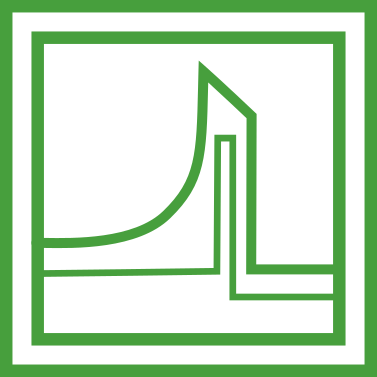Erre a témakiírásra nem lehet jelentkezni.
Nyilvántartási szám:
18/65
Témavezető neve:
Témavezető e-mail címe:
hincz.krisztian@emk.bme.hu
A témavezető teljes publikációs listája az MTMT-ben:
A téma rövid leírása, a kidolgozandó feladat részletezése:
Tensile membrane structures are lightweight, economic, environmental friendly structures with unique, exciting shape. Since they are constituted by a very thin membrane (with typically less than 1 mm thickness) that has a negligible bending stiffness, the shape of the tensile membrane has to be determined properly in order to transfer loads to the supporting structural elements only with tension. The first step of the design of tensile membrane structures, the formfinding, always leads to doubly curved shapes. The next step of the design is the determination of the cutting pattern on the basis of the doubly curved equilibrium shape. The cutting pattern gives the 2D coordinates of the material stripes for the manufacturing. The third step of the design is the structural analysis, the determination of the membrane forces, displacements, member forces in the supporting structure and the reaction forces due to wind and snow load.
The wind load analysis of tensile membrane structures is a critical question. Not only the maximum membrane stresses, due to wind load, have to be compared with the tensile strength of the membrane material, but the slack areas and the displacements have to be analysed also, to avoid the undesirable fluttering which in the worst case can lead to the collapse of the structure. The main difficulty of the wind analysis is the determination of the pressure coefficients of the doubly curved membranes. Since the different design codes do not provide the pressure coefficients of complex hyperbolic and elliptic shapes, those can be determined on the basis of more or less rough approximations or by the help of costly and time consuming wind tunnel tests. Conventionally, in wind tunnels the pressure coefficients of tensile membrane structures are determined on rigid models and the effect of the typically large deformations of the membranes on the pressure coefficients is not taken into account. The aim of the research is to determine and compare the pressure coefficient fields of different membrane structures by the help of wind tunnel tests and computational fluid dynamics (CFD) calculations and to analyse the effect of the displacements of membrane structures on the pressure coefficients. Experience in wind tunnel tests is a preference.
A téma meghatározó irodalma:
1. Noor Ahmed (ed.): Wind Tunnel Design and Their Diverse Engineering Applications, Intechopen (2013)
2. Forster B., Mollaert M. (eds.): European Design Guide for Tensile Surface Structures, Tensinet (2004)
3. Mollaert M., Dimova S., Pinto A., Denton S. (eds.): Prospect for European Guidance for the Structural Design of Tensile Membrane Structures, EC Joint Research Centre (2016)
4. Seidel M.: Tensile Surface Structures, Ernst & Sohn (2009)
5. Nerdinger W.: Frei Otto complete works, Lightweight construction natural design, Birkhauser (2005)
A téma hazai és nemzetközi folyóiratai:
1. International Journal of Space Structures
2. Journal of the International Association for Shell and Spatial Structures
3. Computers & Structures
4. Journal of Structural Engineering (ASCE)
5. Építés-Építészettudomány
A témavezető utóbbi tíz évben megjelent 5 legfontosabb publikációja:
1. Hincz K., Gamboa-Marrufo M.: Deformed shape wind analysis of tensile membrane structures, Journal of Structural Engineering (ASCE) 142: 3, 5 p. (2016)
2. Hincz K.: Nonlinear analysis of cable net structures suspended from arches with block and tackle suspension system, taking into account the friction of the pulleys, International Journal of Space Structures 24:3 pp. 143-152., 10 p. (2009)
3. Hincz K., Gamboa-Marrufo M.: Egyárbocos ponyvaszerkezet statikai vizsgálata szélteher esetén, Építés-Építészettudomány 40:1-2 pp. 67-77., 11 p. (2012)
4. Gamboa-Marrufo M., Hincz K, Tun Cruz V.: Medición de presiones aerodinámicas en una estrutura de membrana, Inginieria: Revista Academica de la Facultad de Ingenieria Universidad Autonoma de Yucatan 15: 3 pp. 167-175. (2011)
5. Gáspár Zs., Tarnai T., Hincz K.: Partial covering of a circle by equal circles. Part I: The mechanical models, Journal of Computational Geometry 5: 1 pp. 104-125., 22 p. (2014)
A témavezető fenti folyóiratokban megjelent 5 közleménye:
1. Hincz K.: Nonlinear analysis of cable net structures suspended from arches with block and tackle suspension system, taking into account the friction of the pulleys, International Journal of Space Structures 24:3 pp. 143-152., 10 p. (2009)
2. Hincz K.: Arch-supported tensile structures with very long clear spans, Journal of the International Association for Shell and Spatial Structures 48: 2 pp. 89-98., 10. (2007)
3. Hegyi D., Sajtos I., Geiszter Gy., Hincz K.: 8-nodal Quadrilateral Double-Curved Surface Element for Membrane Analysis, Computers & Structures 84 pp. 2151-2158., 8 p. (2006)
4. Hincz K., Gamboa-Marrufo M.: Deformed shape wind analysis of tensile membrane structures, Journal of Structural Engineering (ASCE) 142: 3, 5 p. (2016)
5. Hincz K., Gamboa-Marrufo M.: Egyárbocos ponyvaszerkezet statikai vizsgálata szélteher esetén, Építés-Építészettudomány 40:1-2 pp. 67-77., 11 p. (2012)
Hallgató:
A témavezető eddigi doktoranduszai
Pool Blanco Sherly Joanna (2019/2023/)
Rosa Richárd Joao (2023//)
Státusz:
elfogadott
